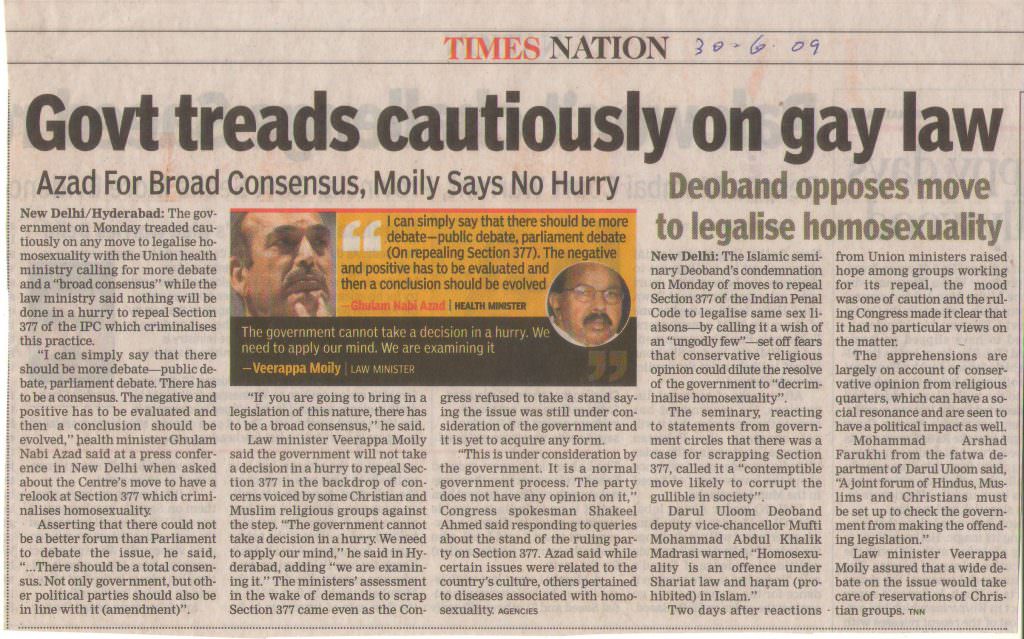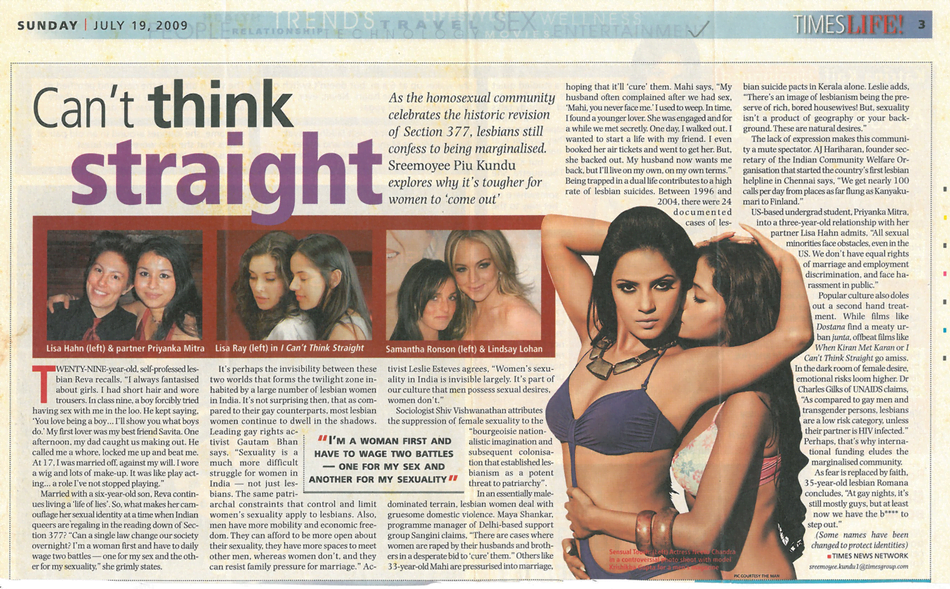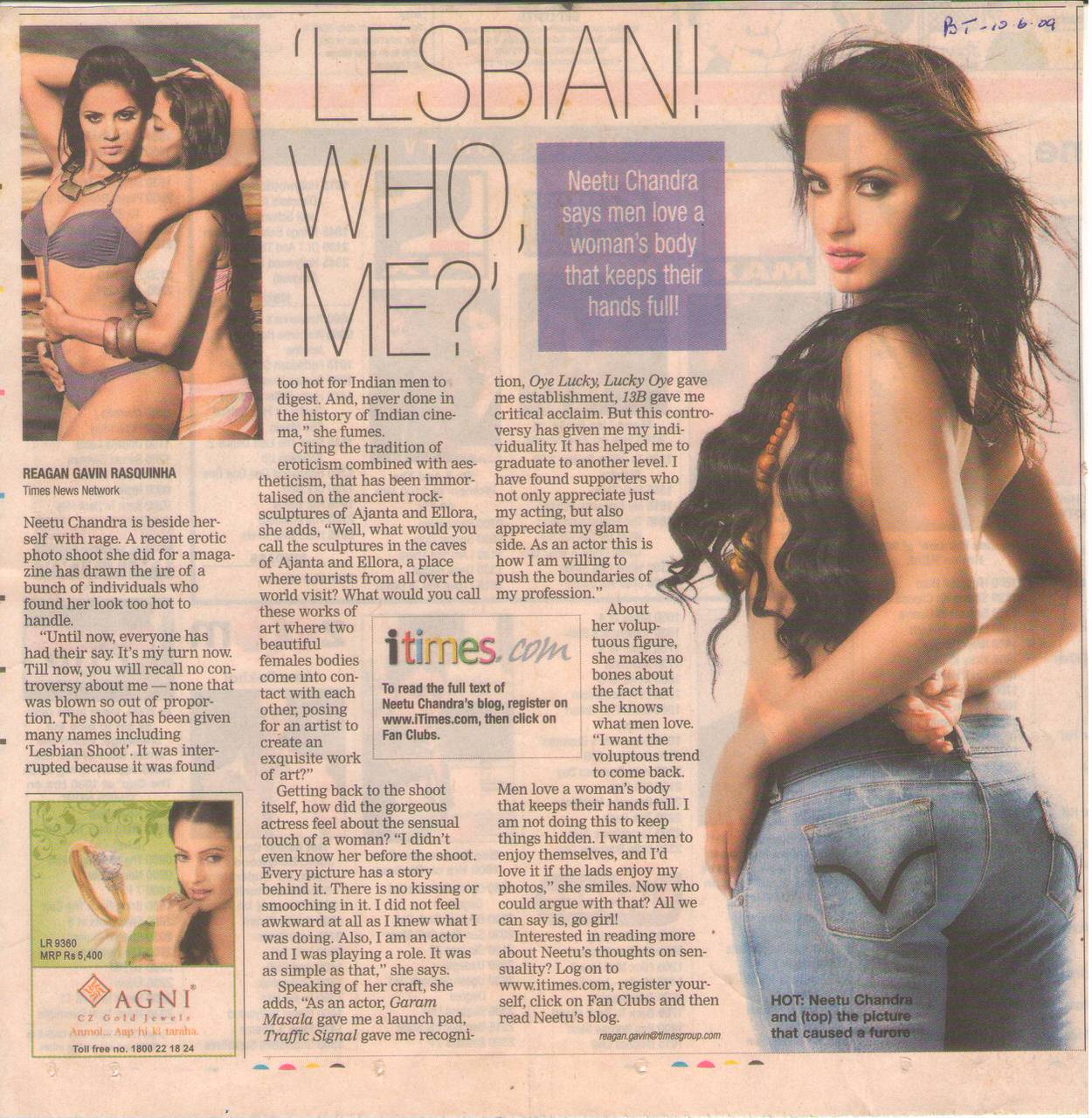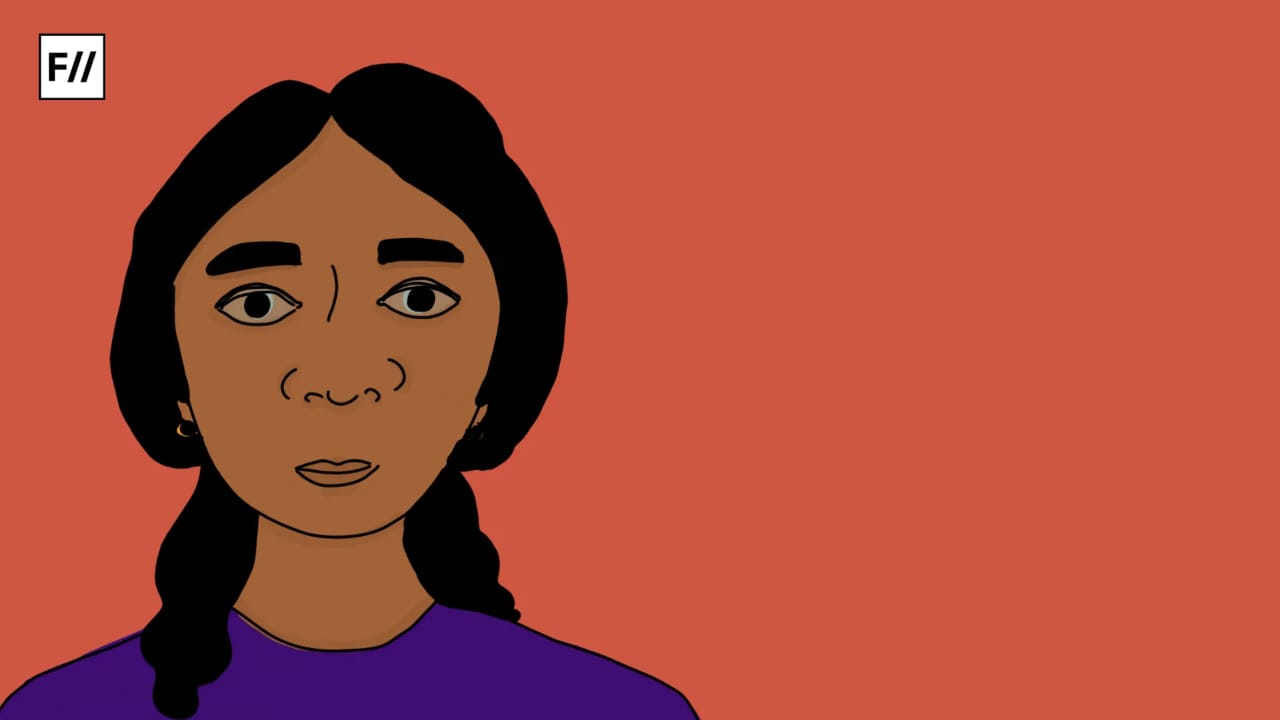Posted by Nazariya
In 2016, a news story on a lesbian suicide case was carried in Midday with the headline ‘Heartbroken ‘Juliet’ hangs self after her girlfriend drinks poison‘. The article went on to disclose the pictures and identity of the couple and their parents as well as their addresses. This report prompted us to track how media has reported on LGBTQIA+ issues over the years.
As expected, in our exercise, we found out that the reporting has been overwhelmingly around the word ‘gay’ where media has uses phrases like anti-gay laws, gay sex, gay ruling, gay acceptance, gay issue, gay pride time and again. The reportage on lesbians has mostly been of a sexual nature with headlines like ‘lipstick lesbians’ along with pictures of two women getting intimate with each other, which caters to the male gaze and does not engage with lesbian issues at all.
 Some of the other problems with media reportage on LGBTQIa+ issues has been an overemphasis on sexual promiscuity, making fun (or treating the issue as a fad amongst youth) of bisexual and asexual identities. One of the articles we tracked was titled ‘Catch me if you can’ which talked about how to spot someone queer. The article reinforced stereotypes about gay men wearing pink shirts and lesbians shaving their heads! Nazariya organized a workshop on April 19, 2017 to engage with the media fraternity to focus on rights of the queer community to fair, accurate and inclusive reporting of their life stories and concerns.
Some of the other problems with media reportage on LGBTQIa+ issues has been an overemphasis on sexual promiscuity, making fun (or treating the issue as a fad amongst youth) of bisexual and asexual identities. One of the articles we tracked was titled ‘Catch me if you can’ which talked about how to spot someone queer. The article reinforced stereotypes about gay men wearing pink shirts and lesbians shaving their heads! Nazariya organized a workshop on April 19, 2017 to engage with the media fraternity to focus on rights of the queer community to fair, accurate and inclusive reporting of their life stories and concerns.
 People with diverse gender identities and sexual orientation have the right to fair, accurate and inclusive reporting of their life stories and concerns. The following guidelines have been drawn up by journalists, editors and activists who identify as LGBTQIA+ and work on issues of sexuality and gender. These guidelines are intended for all media workers creating and handling editorial material on LGBTQIA+ issues:
People with diverse gender identities and sexual orientation have the right to fair, accurate and inclusive reporting of their life stories and concerns. The following guidelines have been drawn up by journalists, editors and activists who identify as LGBTQIA+ and work on issues of sexuality and gender. These guidelines are intended for all media workers creating and handling editorial material on LGBTQIA+ issues:
- Before any reporting of LGBTQIA+ people and issues, consider whether labels such as “gay”, “lesbian”, “bisexual”, or “transgender” are appropriate. If they are not necessary and relevant to the story, they must not be included. A person’s sexual orientation or gender identity status should only be mentioned if it is relevant to the story.
- In the case that mentioning someone’s gender identity or sexual orientation is necessary, it is important to always ask rather than to assume someone’s gender identity or sexual orientation.
- If gender identity is not clarified, it’s best to stick to neutral terms like “them” instead of “he” or “she”.
- It is dangerous to pick up photographs from people’s social media accounts if they identify as LGBTQIA+. They might not feel safe about their gender expression or sexual identity being published.
- Always ask for permission before disclosing the names, photographs, home or work addresses of those who identify as LGBTQIA+ in any form of publication.
- Before photographs of people who identify as LGBTQIA+ are printed, they must be double-checked to ensure that those whose photos are being published are aware of it. Not many LGBTQIA+ people are ‘out’ about their sexual orientation and/or gender identity. And even those who are ‘out’ only feel safe about it in certain contexts.
- It is not ethical to take people into confidence in order to use their private details (i.e. to ’pull a Capote’).
- LGBTQIA+ people often have complicated if not troubled relationships with their families, and must not be pressured into introducing journalists to them.
- Note that the term “alleged” should not be used when describing LGBTQIA+ identities and relationships (such as “alleged transgender person”, or “alleged relationship”), which are all as real and valid as any other.
- It’s important to build a network of members of the LGBTQIA+ community. Many journalists tend to return to the same people time and again for quotes. This limits journalists’ access to the diversity of the LGBTQIA+ community, and also limits the voice of the community in representing themselves.
- Use umbrella terms like “LGBTQ” or “LGBTQIA+” rather than “LGBT” or “the gay community” which are not inclusive terms; “trans” rather than “transgender” or “transsexual” or “hijra” or “kothi”, etc.
- Avoid headlines like, “Let the Gays Marry”. This is a sweeping statement and limits gender identity to one identity (i.e. gay), whereas gender is really a spectrum that enjoys many expressions. (For instance, LGBTQIA+) Try and be as inclusive as possible while giving headlines and captions. It should be made possible to come up with a catchy headline that is also politically correct.
- If you are a beat reporter, insist on seeing a playback of your story to ensure that the desk editor has not slipped in some politically incorrect statements.
- “She Was Not Ashamed of Her Lesbianism”: Avoid such headlines since calling something an ‘ism’ reduces it to a fad or trend rather than an identity.
- Do not mix up transgender with transexual. While the former refers to gender identity, the latter focuses only on sex change. Many trans-identified individuals do not undergo gender reassignment surgery.
- “Transgendered” is a wrong usage of trans identity since it is reductive and consigns gender to the past tense.
- “He was a She”: One does not always have to focus on a transgender individual’s previous gender identity, their process or transitioning operations. Too often, it reduces and ridicules the trans experience and their struggle to live a life free of prejudices.
- Care should be taken to be sensitive; just as one would not report about a cancer survivor’s breast implants or silicone breasts, it is equally demeaning and insensitive to speak of the trans body just in terms of pre-op and post-op and focus only on genitals. It’s important to let the trans individual decide what they want to share.
- When talking about women’s issues, ask if it pertains to trans women or to people assigned gender female at birth.
- Make sure you consider the class, caste, religion, ethnicity, and other social markers. These also affect gender and sexuality.
- If you are doing a story about a certain community, ensure sure you have voices from that community as quotes, reading material, artwork, featured images, etc.
- Try as much as possible to bring diversity into your writing. It’s good to consider questions like, say, whether you can include the perspective of a minority group.
- Avoid ‘saviourism’: persons from marginalised communities must not be treated as victims, as it further disempowers them. Avoid ‘top-down’ statements with a “we must save them” tone.
- Look for stories on the LGBTQIA+ community that does not focus on their identities as ‘victims’. To increase the visibility of LGBTQIA+ people, look at queer people in business, in art, activists, scientists, sports persons.
- Ensure to put the onus where it belongs—identify the person/group with the most power/privilege, and ask what they can do to change the situation: How can heterosexual people change things? How can cisgender people change? What should upper class/uppercaste queer people do? What should English-speaking queer people do?
Also read: Sixteen Ways To Implement Gender Ethical Journalism
Nazariya is a queer feminist organization that believes all LBT* people have the innate capacity to understand, demand; and access their rights.
The guidelines are also available on Nazariya’s blog here.
About the author(s)
Guest Writers are writers who occasionally write on FII.




